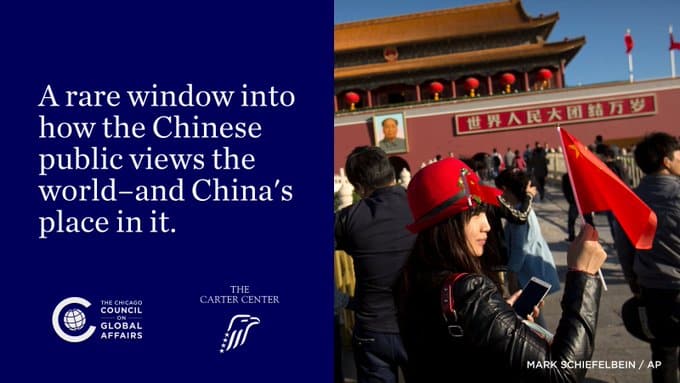Why the U.S. Needs to Listen to China, and Why China Needs to Listen to the U.S: The Importance of the Mutual Economic Criticisms Between Two Major World Powers
The relationship between the United States and China involves cooperation and competition, but recently the latter has received more attention. Much of the mistrust between the two countries has its roots in geopolitical tensions—China’s assertive behavior in the East and South China Seas, for instance, or U.S. naval surveillance off China’s coasts. But economic tensions have played a large role as well.
Discussions of the U.S.-China economic relationship too often begin with a recital of each country’s grievances against the other. The usual litany of American criticisms includes China’s management of its exchange rate, subsidies that benefit state-owned enterprises, and barriers to American companies seeking to operate in China. Another prominent critique involves Chinese cyber-hacking of U.S. businesses’ intellectual property, and China’s failure to protect intellectual property more generally.
For its part, China castigates the U.S. for its irresponsible fiscal trajectory, its political opposition to Chinese investment in American companies and infrastructure, and its export-control laws, especially those restricting the export of technologies with potential military applications.
We believe it’s time to turn the typical exchange of economic critiques on its head. The two countries have largely been engaged in a dialogue of the deaf, each blaming the other for its own failings, exerting pressure on the other to accede to its demands, and too often waiting for the other to act first. In fact, it is in each country’s self-interest to meaningfully address the criticisms made by the other.
The greatest American threat to China’s economic future is the possibility that America’s economic success could come to an end; the greatest economic danger China poses to the U.S. is the chance that China’s economy fails to grow. By contrast, if each country gets its own house in order and thus succeeds economically, that should diminish economic insecurity, which generates friction, and increase confidence about the future, which fosters a constructive relationship. As former U.S. Treasury secretaries with long experience working with China, we believe each country should undertake significant reforms. Seriously considering each other’s criticisms is a good way to begin.
The United States has enormous long-term strengths, including a dynamic and entrepreneurial culture, a strong rule of law, flexible labor and capital markets, vast natural resources, and relatively favorable age demographics. But China is right to say that improving America’s long-term fiscal outlook is a prerequisite to sustainable growth. Well-structured fiscal reforms could contribute to growth and job creation now while reducing the burden of debt in the future. Some argue that the government could create jobs and increase demand in the short term through public investment in infrastructure or other sectors, while simultaneously taking steps to improve the country’s long-term fiscal trajectory. Others argue that the nation could create more well-paying jobs by reforming its tax code for individuals and corporations, reducing the distortions that undermine economic competitiveness while raising necessary revenue.
Chinese investors could help the United States speed growth now without worsening its long-term debt problem. The U.S. has vast infrastructure needs and a paucity of public capital. But byzantine regulatory and policy barriers too often discourage private investment in major projects. A more streamlined and welcoming environment for domestic and foreign investment in infrastructure projects would create jobs and boost competitiveness.
Much of the effort to attract Chinese investment—whether in infrastructure or manufacturing or agribusiness—needs to come from outside Washington. States and cities have a choice: they can continue to be passive recipients of occasional Chinese investment, or they can design more-systematic approaches to seeking Chinese capital, and the jobs and competitive advantages that accompany it. In Ohio, Michigan, and California, for example, proactive governors are attracting Chinese investment and creating high-quality jobs in sectors like auto parts and clean energy.
Chinese investment could also benefit the U.S. by facilitating exports back to China. In the industrial Midwest, for example, relatively small firms, including family businesses, play a large role in manufacturing and employment. Expansion into China could contribute to the growth of many of these firms. Chinese investors not only can inject capital into these firms; they can help them navigate Chinese markets through strategic partnerships.
Relaxing some export controls is another way to expand opportunities for U.S. firms—and address a common Chinese critique of U.S. economic policy in the bargain. The U.S. should of course restrict the export of technologies with military applications when the national-security implications are significant. But many so-called dual-use products—those with important nonmilitary applications and some military applications—are restricted unnecessarily, and this harms the workers who make those products. In some areas, such as clean energy, the U.S. can both increase exports and promote other national interests—like helping China meet environmental goals and climate-related commitments.
Just as the United States should act on Chinese criticisms, China would be better off taking American criticisms seriously. For sustained economic growth, China must de-emphasize government investment in its own infrastructure, which currently plays an outsize role in the economy, and enable private investment in services and other emerging sectors. And it must de-emphasize exports in favor of domestic-led growth, especially household consumption. These shifts can be advanced by opening the economy further to private-sector competition, including competition from U.S. companies. Doing that would force state-owned firms to compete on a level playing field, without preferential treatment, and give a boost to both the private sector—the future of the Chinese economy—and the underdeveloped service sector. The Bilateral Investment Treaty with the U.S., currently being negotiated, would help by giving Chinese reformers leverage to open their markets to competition and encourage cross-border investment, creating jobs in both countries.
Chinese investors could help the U.S. speed growth without worsening its debt problem.
The efficiency of China’s economy would likewise improve if the country reformed its financial sector, encouraging competition (and empowering Chinese consumers) by granting more private banking licenses, liberalizing interest rates on deposits, and ending preferential access to credit for state-owned firms. Those subsidies create an overabundance of cheap money that many Chinese companies depend upon. Mispriced capital impedes the evolution of China’s economy, prevents the efficient use of capital, and financially constrains some of the economy’s best performers—private companies, which are already responsible for more than 70 percent of Chinese jobs.
China also subsidizes land, energy, and resource prices, in part to support its massive industrial sector. These subsidies are a major reason China is now the dominant global player in steel, cement, and other industries, but they have also distorted the Chinese economy. Beijing has begun to liberalize many commodity prices and has pledged to make further adjustments, including to oil and natural-gas prices. China has its own motivations for doing this—for example, to conserve resources and encourage efficiency. Continued movement toward market pricing would allocate resources more rationally and improve the workings of the Chinese economy, while also eliminating a major source of economic tension between Washington and Beijing. Similarly, there have long been tensions regarding China’s use of artificially low exchange rates to subsidize exports, but currency reform is manifestly in China’s own interest. Its leadership understands this and has made real progress here.
Finally, China’s long-term success, and even much of its near-term success, depends on innovation, as its leaders have said. Innovation, in turn, requires the protection of intellectual property. China has made many commitments to protect intellectual property in the past, but too often ignores them. Ultimately, that will hurt domestic companies such as Xiaomi and Alibaba more than it will hurt Apple or Amazon. China and the U.S. would also benefit from a global regime to protect intellectual property from hacking for commercial purposes.
By addressing each other’s chief economic criticisms, China and the U.S. would simultaneously improve their own economies, remove irritants to their relationship, and foster trust. Doing so would not make geopolitical tensions disappear, but it would anchor them in a framework of mutual interest.
For all their differences, the U.S. and China face several similar internal challenges: rising health-care costs, inadequately funded social safety nets, and fiscal problems at the state or municipal level. And each faces serious income-distribution issues, though the specifics are different. The U.S. continues to face significant pressure on low- and middle-income wages, as well as widening income disparity, which runs contrary to the nation’s objective of broadly shared growth. In China, the emergence of an ultra-wealthy class is stoking resentment and unease.
The two countries also share an important external challenge: the need for a smoothly working global trading regime. As the world’s largest trading nations, they both have an interest in heading off protectionism that would damage their economies. And beyond trade, the two countries have other common goals: Middle East stability, especially with regard to Islamic extremism; climate-change mitigation; nuclear nonproliferation.
It will be much easier to make progress on these issues if America is working in complementary ways with China than if the two countries are working at cross-purposes. The international institutions that should be dealing with these challenges are far from adequate. But if the United States and China—the world’s two biggest economies—act together, that can create the kind of political and moral suasion that helps lead global action. The recent bilateral climate agreement, pledging to limit emissions in both countries, demonstrates how U.S.-China cooperation can produce meaningful results.
Arguably, the best hope for effective transnational action on many of the world’s thorniest problems lies in the cooperation of these two countries. For that to happen, perhaps the most crucial challenge will be to first look within.
HENRY M. PAULSON Jr. & ROBERT E. RUSH from the June 2015 Issue of The Atlantic








